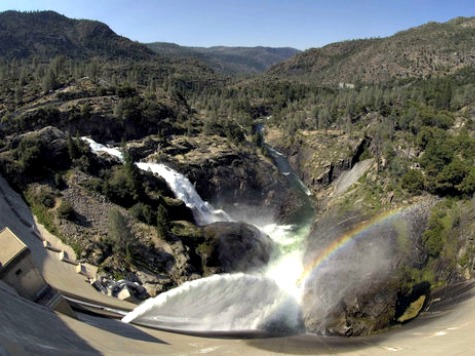The CAL WatchDog blog is running a series on the trends in California water use and pricing during the current severe drought. They confirm our August prediction that voluntarily public conservation and agricultural water districts are doing an excellent job responding to the drought.
Breitbart California found that water use in two relatively normal water years of 2000 and 2010 declined by 12% even though population grew by 9%. The business sectors’ commercial and industrial water use fell a spectacular 36% and 18% respectively; while residential interior water use also declined by 27% per capita.
During this year’s drought, voluntary conservation by homeowners and businesses has been so effective that many cities like Roseville, CA have cut water use by 20%.
For agricultural water districts that have been pounded this year by the drought, water-sale-auctions already adjust for the scarcity of water. During wet years, water-auction-prices can range in the hundreds of dollars per acre-foot, according to Cal WatchDog, but during droughts the cost can typically increase at least tenfold to the range of thousands of dollars per acre-foot.
But these higher costs are also mean market prices for fruits, vegetables, nuts and livestock rise. This explains why California farmers’ and ranchers’ revenue is predicted to only fall 3% this year.
Some farmers do have “senior water rights” that entitled them to fixed-cost deliveries of cheap system water through the State Water Project. But, fixed-price contracts are usually for many years or decades. Water contracts are a market mechanism that ensure SWP can afford the long-term investments to keep supplies at affordable prices.
If government tried to violate contract water deliveries or force farmers to pay higher rates, they would be illegally “taking,” which the U.S. Supreme Court ruled in Koontz vs. St. Johns River Water Management District this year must be fully compensated.
Academics at the UC Davis Center for Watershed Sciences are proposing for government to sell water allocated to fish and wildlife refuges to farmers at sky-high drought-auction-prices. But a portion of what farmers’ pay to purchase water from their districts already includes proportional costs to maintain California’s Central Valley Project fish and wildlife conservation.
Forcing farmers to pay auction prices to get water they were already charged for would be asking them to pay twice. Such sales are probably illegal under the eminent domain restrictions’ “project influence rule.” That rule prohibits government from taking water away from farmers for a public project to protect fish, create an artificial scarcity, and then charge farmers the higher scarcity price in a drought.
The answer to California’s cyclical droughts is to generate more of what Cal WatchDog calls “supply-side solutions” that would increase the amount of water available for all years. Supply-side solutions don’t take water from one user and give it to another. Building more above ground reservoir storage and adding 10-15 feet onto Shasta dam are examples of supply-side solutions that when coupled with effectiveness of voluntary water conservation would solve California’s cyclical drought challenges.
Chriss Street suggests that if you are interested in California economy
please click on
If Silicon Valley Were a State, it Would be #1 in Job Growth

COMMENTS
Please let us know if you're having issues with commenting.